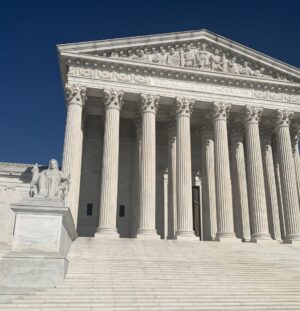Capitol
Hill
seen
on
a
cloudy
day.
(Photo
by
Anna
Moneymaker/Getty
Images)
As
traditional
defense
contractors
and
outsiders
alike
gather
for
the
Association
of
the
US
Army
mega-conference
this
month,
the
latest
Army
acquisition
policy
just
reinforces
old
dysfunctions
that
keep
the
most
innovative
firms
away.
Above
all,
the
Army’s
March
directive
on
“Enabling
Modern
Software
Development
&
Acquisition
Practices”
[PDF]
encourages
the
service
to
buy
custom-built
software,
developed
under
arcane
cost-plus
accounting
rules,
“to
the
maximum
extent
possible,”
instead
of
following
best
private-sector
practices.
Even
the
official
Senate
Armed
Services
Committee
report
[PDF]
warns
that
the
Army
directive
“appears
to
deviate
from
the
current
law”
and
requires
the
service
report
back
by
Jan.
15
on
how
it
“will
implement
the
Directive
in
a
manner
that
supports
the
participation
of
small
businesses
and
nontraditional
defense
contractors.”
The
Army’s
fumbling
is
just
the
latest
and
most
blatant
manifestation
of
the
antiquated
business
model
in
place
across
the
Department
of
Defense.
It’s
an
approach
that
consistently
fails
to
seek
out,
absorb,
and
deploy
innovative
new
technologies
as
fast
as
the
commercial
world
or
our
adversaries.
There
are
pockets
of
excellence
—
like
DIU,
AFWERX,
SOFWERX,
and
SDA
—
that
have
entrepreneurial
culture
baked
into
their
DNA.
They
are
funded
by
a
disorganized
hodgepodge
of
well-meaning,
if
uncoordinated
pots
of
money
—
including
Hedge
Portfolio,
APFIT,
RDER,
RCCTO,
and
RIF
—
and
deliver
cutting-edge
products,
including
software,
to
the
warfighter
at
the
speed
of
relevance
using
commercial
purchasing
methods.
But
the
Army
directive appears
to
be
doubling
down
on
the
legacy
system
that
everyone
else
is
trying
to
move
away
from
as
quickly
as
possible.
That
current
system,
resembling
the
Soviet
centralized
economy
model,
notoriously
ignores
currently
available
technology
and
products
made
by
commercial
companies,
and
instead
fantasizes
impossible-to-make
exquisite
weapons
through
the
“requirements”
process,
runs
a
fiction-writing
contest
to
select
from
one
of
the
five
remaining
large
prime
contractors
that
can
write
such
proposals,
then
awards
the
winner
a
monopoly
for
decades
for
an
item
they
have
never
made.
Because
the
DoD
locks
themselves
into
purchasing
that
product
only
from
that
contractor,
no
private
company
would
invest
out
of
their
own
pocket
in
a
superior
product,
as
there
is
no
way
for
the
DoD
to
switch.
The
prime
contractor
is
free
to
burn
billions
of
taxpayer
dollars
for
years,
unmolested
by
competitive
pressures
from
other
vendors
or
adversaries
whizzing
by
us.
The
worst
part,
however,
is
the
way
these
prime
contractors
get
paid,
specifically
the
so-called
“Cost
Plus”
model
—
which
particularly
drew
ire
in
the
SASC
report.
Media
reports
often
liken
the
Cost-Plus
model
to
an
hourly
time
and
materials
arrangement.
It
is
not.
It
is
much,
much
worse.
Imagine
you
need
to
replace
the
heating
system
in
your
house.
You
prefer
the
plumber
bid
for
the
job
using
a
firm
fixed
price
with
everything
included
so
there
are
no
nasty
surprises
at
the
end.
Many
plumbers
work
this
way:
pad
the
estimate
a
little
for
safety,
then
perform
the
work
while
aggressively
keeping
expenses
in
check
to
maximize
the
profit
left
over
at
the
end.
Thousands
of
years
of
economic
evolution
have
made
this
the
most
popular
business
model
as
it
rewards
efficient
work
by
the
vendor
with
higher
profits
and
rewards
the
customer
with
certainty
of
cost.
If
the
job
is
too
complex
for
firm
fixed
price
—
say,
there
are
unknowns
inside
the
walls
—
the
plumber
might
say,
“It
will
be
$85
per
hour
for
my
labor,
plus
the
cost
of
materials”.
This
is
still
a
normal
commercial
practice.
The
plumber
will
be
rewarded
for
driving
the
underlying
cost
of
that
hour
as
far
below
$85
as
possible
to
maximize
the
profit
on
each
hour.
This
is
where
the
DoD
goes
off
the
rails.
Imagine
then
telling
your
plumber:
“OK,
inside
that
$85
per
hour,
I
need
to
see
exactly
how
much
you
are
paying
yourself
and
your
workers
in
salary,
benefits,
and
all
your
internal
business
costs,
so
I
can
make
sure
you’re
not
making
too
much
profit”.
After
some
very
colorful
language,
the
plumber
will
tell
you
it’s
none
of
your
business.
But
a
defense
contractor
can’t
tell
the
US
military
to
go
to
hell.
There’s
no
commercial
market
for
tanks
and
submarines.
So
the
hardcore
defense
industry
has
had
no
choice
but
to
implement
laborious,
bespoke
accounting
systems
—
and,
in
fact,
has
used
them
not
only
as
a
barrier
to
entry,
keeping
competitors
from
entering
the
defense
business,
but
as
a
tool
to
extract
more
profit
from
the
Pentagon.
In
the
Cost-Plus
world
companies
are
rewarded
for
increasing
their
business
expenses.
Instead
of
$85,
you
get
$125,
then
add
all
the
unnecessary
auditing
and
accounting
expenses
just
to
keep
track
of
all
this
nonsense
and
you’re
up
to
$150.
Then,
because
you
have
a
locked-in
monopoly,
the
hours
spent
performing
each
task
magically
inflate
once
the
work
starts.
The
customer
can’t
cut
the
contractor
off
and
switch
to
someone
else.
The
excellent
article
The
Law
the
Department
of
Defense
Loves
to
Break
accurately
describes
the
misguided
philosophy
that
drove
DoD
to
create
this
dystopian
model
in
the
first
place.
(The
article
was
written
by
an
employee
of
non-traditional
tech
contractor
Palantir,
but
is
not
an
official
company
statement).
But
needless
to
say,
it
is
perhaps
the
worst
way
to
buy
anything
that
one
could
possibly
imagine.
The
net
result
of
the
Cost
Plus
incentive
structure
is
to
skew
the
“make
or
buy?”
decision
towards
“make”
wherever
possible.
Buying
a
finished
off-the-shelf
item
that
could
shave
years
off
of
deployment
to
the
warfighter,
and
save
billions
in
the
process
is
anathema
to
a
Cost
Plus
contractor.
It
would
cost
them
a
boatload
of
profit
they
could
make
reinventing
wheels.
Lawmakers
are
no
dummies.
In
1994
they
passed
the
Federal
Acquisition
Streamlining
Act,
which
amongst
other
things,
mandates
that
before
a
Cost-Plus
custom
development
contract
can
be
solicited,
the
DoD
must
first
search
the
commercial
market
for
something
that
already
exists,
and
is
“close
enough”
to
what
is
needed,
and
if
it
exists,
buy
it
with
whatever
commercial
business
model
that
vendor
uses
(which
is
invariably
some
kind
of
fixed
price
arrangement).
This
is
codified
in
10
U.S.C
3453.
As
the
Senate
report
language
spells
out,
it’s
very
hard
to
see
how
the
Army’s
March
directive
does
not
“deviate”
from
that
law
—
and
even
if
the
service
can
somehow
satisfy
the
letter
of
FASA,
it
very
much
violates
the
spirit.
And
while
FASA
is
far
from
consistently
enforced,
it’s
not
a
dead
letter,
as
shown
by
the
Army’s
loss
to
Palantir
in
a
2017
lawsuit
over
this
very
matter.
In
the
future,
a
new
suit
over
the
new
policy
could
cost
the
Army
hundreds
of
millions
and
years
of
delay.
Yet
the
Army
seems
to
be
heading,
undaunted,
towards
the
cliff,
as
shown
by
this
declaration
by
the
service’s
acquisition
chief,
Doug
Bush:
“If
some
companies
don’t
want
to
bid
on
a
contract,
it’s
a
free
country.
Don’t
bid.
Others
will.
My
goal
is
simply
to
get
the
capability
for
the
Army,
not
to
make
everybody
happy.”
But
the
very
best
software
companies
in
the
world
all
work
on
firm
fixed
price:
By
pre-ordaining
Cost
Plus,
the
Army
effectively
excludes
the
very
best
in
the
business
right
from
the
get-go.
What
possible
reason
could
one
have
to
do
this?
The
only
beneficiaries
of
this
policy
are
the
incumbent
defense
contractors,
who
are
rejoicing
at
the
affirmation
of
business-as-usual,
and
our
adversaries
around
the
world,
who
will
take
aid
and
comfort
in
this
opportunity
to
surpass
the
United
States’
competitive
advantage.
It’s
incumbent
on
Congress
to
step
in,
conduct
rigorous
oversight,
and
if
necessary
pass
new
legislation
to
hold
the
Army
to
both
the
letter
and
the
spirit
of
the
Federal
Acquisition
Streamlining
Act.
It’s
clear
the
Pentagon
won’t
do
it
themselves.
Warren
Katz
is
Chairman
of
The
Alliance
for
Commercial
Technology
in
Government,
the
industry
association
representing
commercial
technology
companies
that
would
like
to
do
business
with
the
DoD
on
commercial
terms.
He
was
past
Managing
Director
of
The
Air
Force
Accelerator
Powered
by
Techstars,
prominent
angel
investor
and
startup
founder
in
dual-use
companies.






 Sejal Patel is
Sejal Patel is




 Jordan
Jordan




